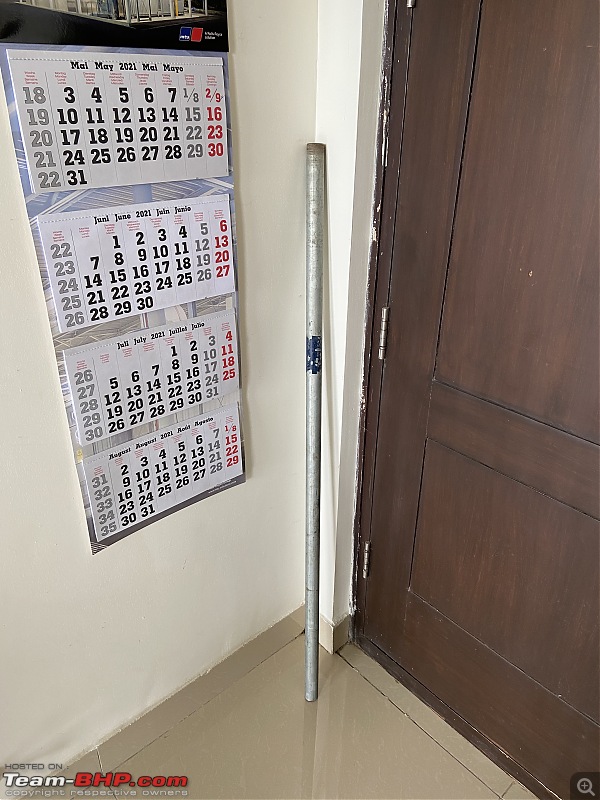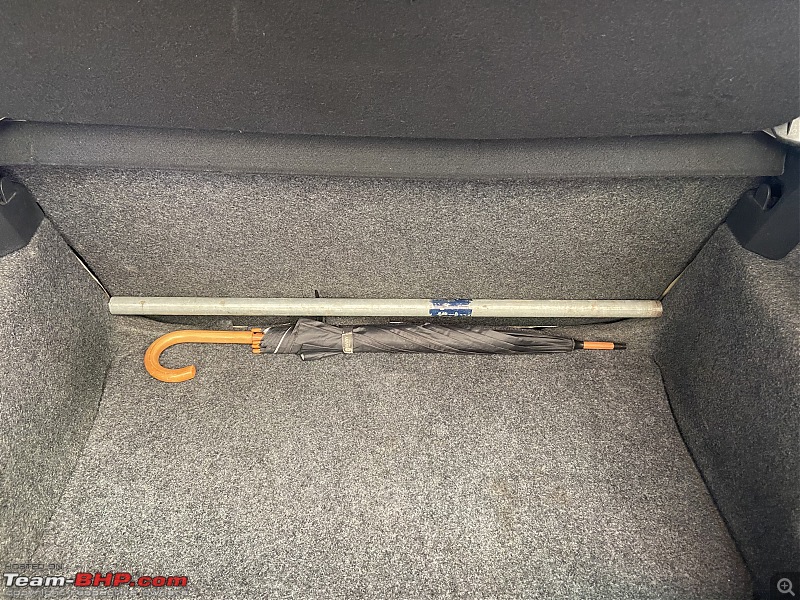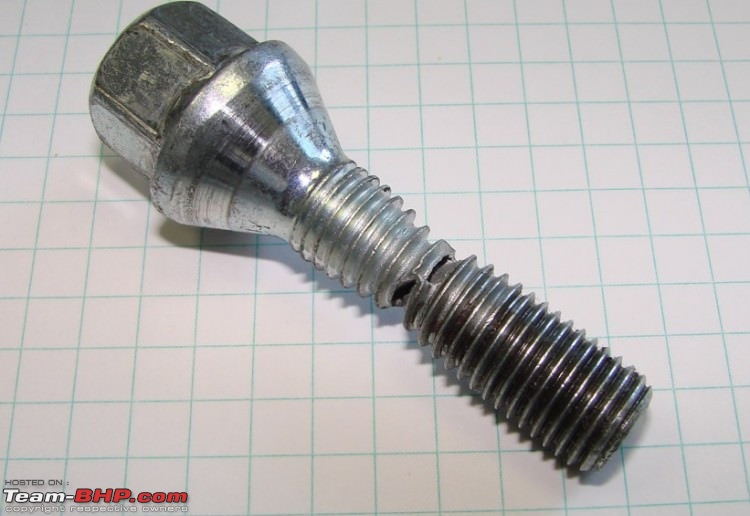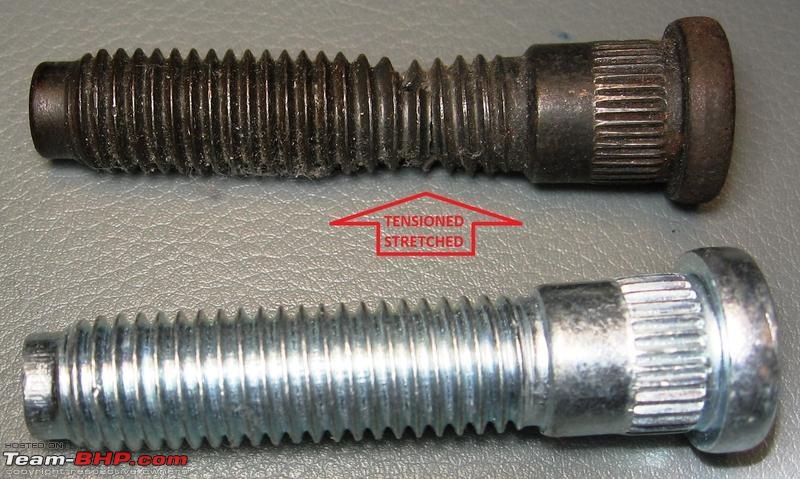
 | |
|
Originally Posted by Gannu_1
(Post 5059926)
That also reminds me to get a large pipe which I can use as a cheater bar to extend the lug wrench. Makes loosening the wheel's lug nuts way easier! |


|
Originally Posted by Jaguar
(Post 5086059)
That rules out 99.99% of the shops in India. The only place where I have personally seen a torque wrench being used for fitting wheels was at the Toyota service center in Srinagar. |

|
Originally Posted by SB08121980
(Post 5086084)
Those pneumatic impact wrenches not only make it hell difficult to unscrew those lug nuts when you have a flat tyre; I have seen threads get damaged and some cases, even the bolt shears off due those impact wrenches . |


|
Originally Posted by Indian2003
(Post 5086837)
I use an impact wrench to tighten my wheel bolts to 140 Nm. After a 100 kilometers, I go over with the same torque using the impact wrench. Never had problems. |
| First, a word about how torque sticks in general work. You'll note each stick is thinner as you go to lower torque specs. This makes each stick have less "torsional stiffness." Think of a graph with the torque on one axis and the rotation (in degrees angle) on the other. Each torque stick will have a different trace of torque vs angular displacement. The smaller ones have more angular deflection for a given amount of torque. Keep this in mind. When you have no impact mechanism, this reduced torsional stiffness is irrelevant because the force is constantly applied. Thus, all the torque applied is passed along to the end of the torque stick. And the time associated with force application is irrelevant because it's essentially zero. Now what happens with the impact mechanism? Starting with no or very low torque, the mechanism doesn’t actuate, you have no hammering action, just a steady/smooth. It takes a certain minimum amount of torque to cause the hammering action, which occurs when the torque (reaction torque, here) overcomes the dog/pin static torque, causing relative motion between hammer and anvil. Since we have enough reaction torque to activate the mechanism, the tool behaves differently. Now, it delivers torque in discrete “chunks.” The torque delivered is much higher, but is short in time duration—an impulse. This is how a regular hammer works in striking a nail—the mass of the hammer and its velocity determine that energy it will be able to deliver to the nail. But what if that carpenter’s hammer hits a nail covered with several thick layers of rubber? In this case, that impact energy is diverted into compressing the rubber instead of driving the nail. The same amount of energy is present, but less is delivered to the nail because more went into compressing the rubber matting over the nail. The torsional stiffness of the torque sticks creates the same effect—the discrete impulse of the hammer mechanism is diverted into twisting the torque stick, causing each impulse to be changed into a longer time but lower peak event. The less stiffness, the more time and the less twist. The more stiffness, the less time and the more peak force. That time component is absolutely key. There is a time parameter associated with each combination of torsional stiffness and impact force. The more torque or the less stiffness, the more time is consumed by each event. After each blow, some time must pass when the energy absorbed (stored) by the torque stick is returned to the system. Engineers would definite a “torsional modal frequency” to capture that time. If the impact tool can apply another hammer blow before the torque stick has dissipated the energy it stored, then not all the energy from the torsional deflection will have been returned to the system yet; so the energy “accumulates” and the applied torque will increase. It’s as if before we had a swimming pool being filled at the same rate it was leaking out, causing the water level to remain constant, then suddenly someone plugs the pool’s leak and the water starts to rise. Because the deep socket is less stiff in torsion than the short socket, it mimics some of the effect of the torque stick and it makes that time factor longer. This makes it more likely that energy will “pile up.” More specifically, it lowers the natural torsional resonant frequency of the system. The shallow sockets have slightly higher torsional frequency, make the additional energy “pile up” at a much lower rate. All that to say this: the “medium torque” cordless has much higher rate of hammer blows, and that frequency being higher than the natural torsional resonance of the system, it will allow the energy to “pile up” a bit, causing the delivered torque to the exceed the rating of the torque stick. Torque stick manufacturers would do well to publish a maximum blows per minute “BPM” for each torque stick corresponding to its torsional modal frequency. But since they don’t know what sockets you’re using or anything, they can’t publish anything meaningful. The takeaway here is not that the torque sticks need to be “calibrated”—it’s that they need to be used with a tool that has a low enough BPM rate to fall beneath their natural frequency. PS: If you tried the highest torque rated sticks with the medium torque gun, you’d find this problem almost entirely disappears. WHY? The higher rated sticks are stiffer, have a higher frequency, and this frequency is almost certainly higher than the BPM rating of even the medium torque cordless gun. |
|
Originally Posted by Gannu_1
(Post 5086211)
The pipe was immensely helpful and I barely had to put any effort to loosen the bolts which were tightened at the wheel balancing/alignment centre. Usually I would have to stand on the lug wrench that came with the car and push/press a couple of times to loosen the bolts. |


|
Originally Posted by sagarpadaki
(Post 5110625)
I now want a attachment to Dremel which can cut this iron rod. I could not find any proper leads on Amazon or other online stores. Any guidance would be appreciated. |
|
Originally Posted by sagarpadaki
(Post 5110625)
I need to cut a 5mm thick iron rod. But the catch is it is in a very hard to reach place Any guidance would be appreciated. |
|
Originally Posted by carthick1000
(Post 5110701)
I think you need a speedclic / EZ lock accessory with the right blades for your material type. On Amazon, I could find the following: https://www.amazon.in/Dremel-SC456B-...dp/B001DH7X22/ https://www.amazon.in/Dremel-EZ456B-...dp/B000FBLRVU/ If you don't have a chuck / the blade holder, you can get something like this: https://www.amazon.in/DIY-Crafts-Uni...dp/B07CVDWTNV/ Choose based on what type of accessory (Speedclic / EZ lock / chuck) you already have for Dremel. |
|
Originally Posted by Thad E Ginathom
(Post 5110717)
Cut-off discs. This is the low-cost alternative: Amazon Link I've seen these praised by a guy on youtube recently, but he is a skilled machinist, and even he says they break if you even look at them wrong. That's my small experience. Very fragile, which means dangerous. Eye protection essential, full-face would be good. |
|
Originally Posted by Amrik Singh
(Post 5110722)
If at least a drill machine can reach the intended cut, take a worn out cutting disc, sandwich between bolt head and a Nut, fix the bolt in drill machine chuck and you can manage cutting it. |
|
Originally Posted by sagarpadaki
(Post 5110765)
Thanks. I have the stock chuck which came with Dremel. |
|
Originally Posted by Thad E Ginathom
(Post 5110898)
The adjustable chuck is a great upgrade, especially if you use the Dremel as a drill. |
|
Originally Posted by Amrik Singh
(Post 5110815)
This is how I mean. Please exercise caution. This is a Jugaad |
| All times are GMT +5.5. The time now is 07:37. | |